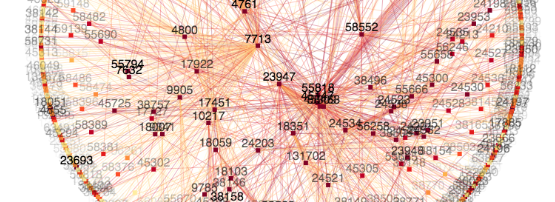
A new APNIC Labs tool is now available on the labs website, providing a visualization of the BGP peering relationships within a single economy, over IPv4 and IPv6.
The tool shows two charts, side by side, representing the visible autonomous networks in the selected (ISO 3166-1) economy. Each network is positioned according to its connections – networks with more downstream connections are closer to the centre, and networks around the edge are grouped by their most well connected upstream.
Visualization of a segment of the Internet
The display style is inspired by CAIDA’s AS Core posters, but rather than showing the Internet as a whole, the charts here are a drill-down into one economy, and group networks by relationship rather than geography.
From this visualization, which networks play an important connectivity role within an economy become apparent, as do the relative strength of those roles between IPv4 and IPv6.
There are many ways to look at network relationships, and using graphics in this way can help an abstract topic like BGP paths become more real.
Public data, remixed
This visualization is built using entirely public data, from three keys sources.
The first source is the University of Oregon’s Route Views Project, providing regularly updated BGP information for both address families. This information shows the visible peering relationships between autonomous networks by exposing the network path information taken to reach each announced network prefix, and allows us to infer the size of those relationships by the sum of all the announced prefixes passing through each pair of networks.
The second source is the Number Resource Organization’s delegated statistics report, a combination of the five RIRs’ separate delegated statistics reports and the IANA address registries. This report is updated daily, and shows a global map of Internet resources. The data from this report is used to group autonomous systems by ISO 3166-1 economy code.
The third source is the RIR’s registries, to provide network names. This uses the Registration Data Access Protocol, a machine-friendly alternative access mechanism for WHOIS data.
The views expressed by the authors of this blog are their own and do not necessarily reflect the views of APNIC. Please note a Code of Conduct applies to this blog.
